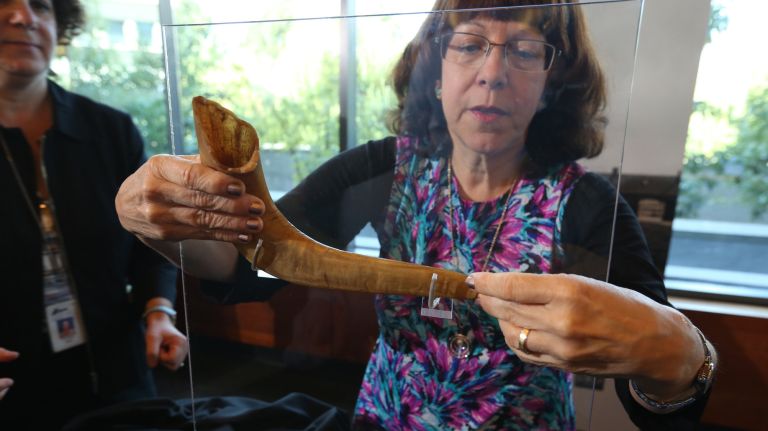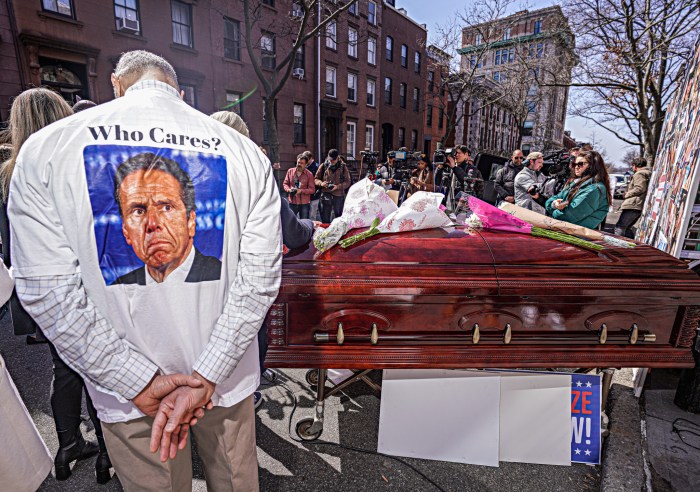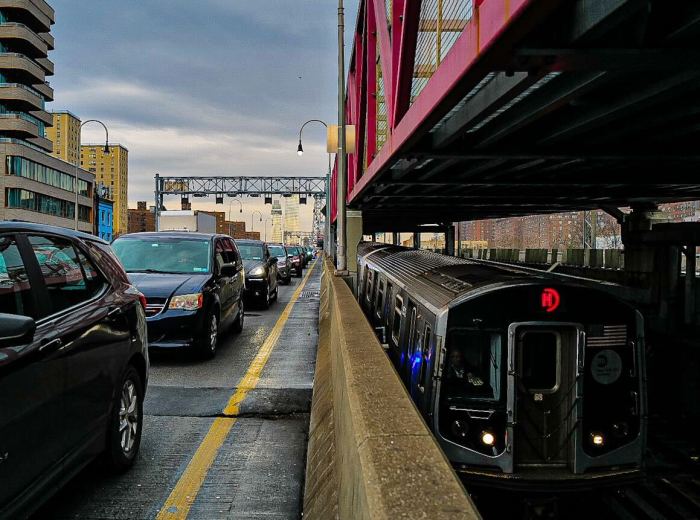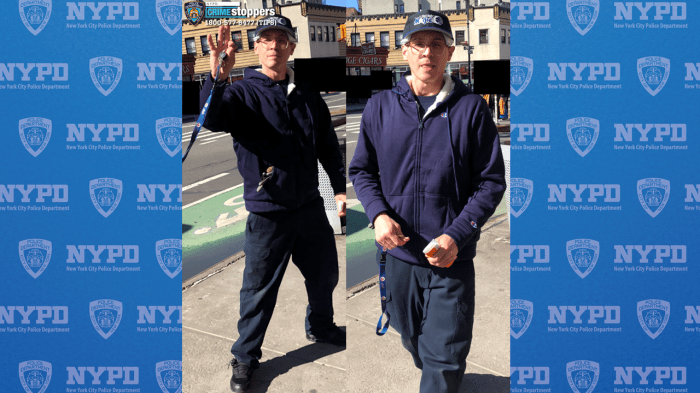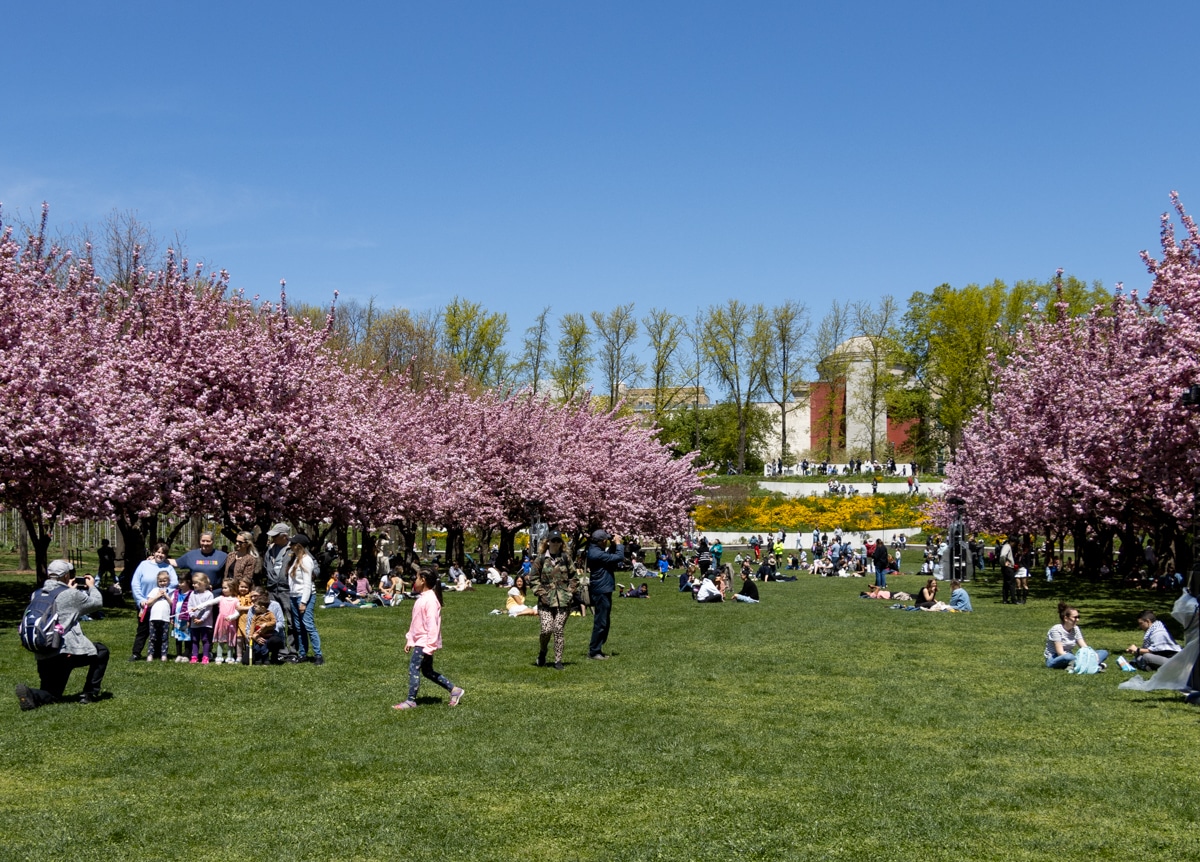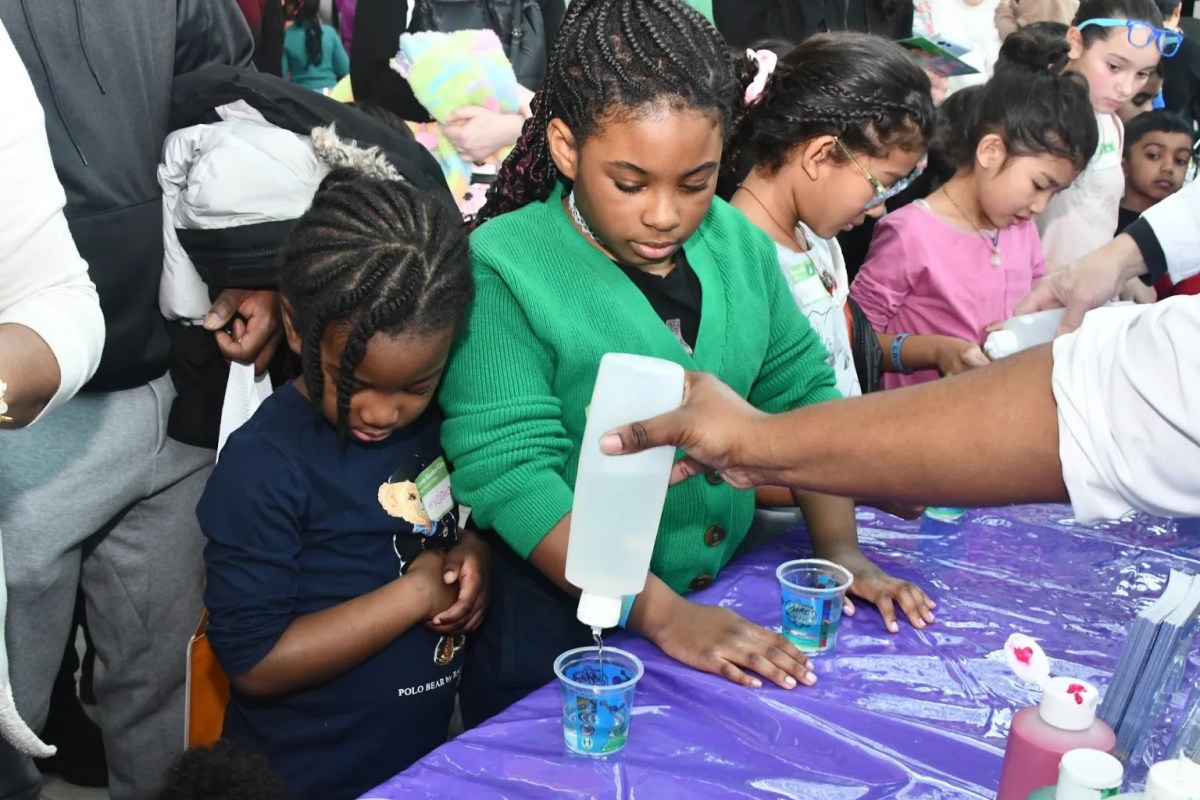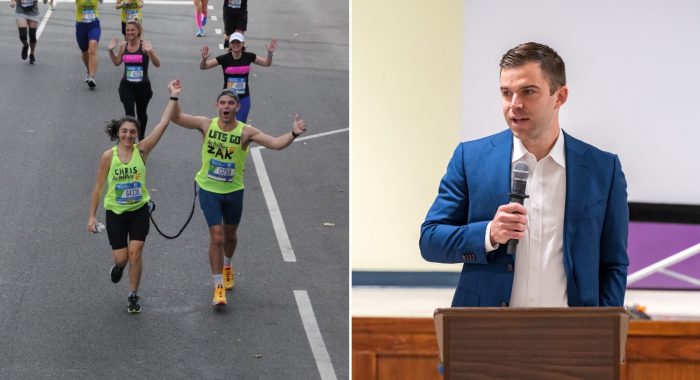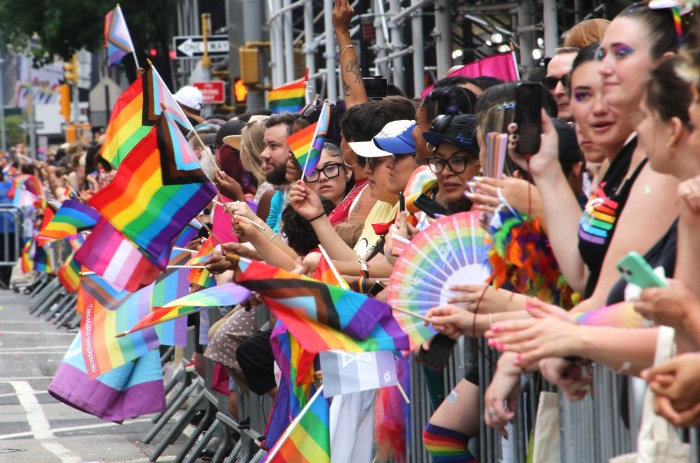
A shofar, carefully hidden and secretly used by Jewish prisoners in Nazi concentration camps during World War II, is now on display for the first time at the Museum of Jewish Heritage in lower Manhattan.
It will also be used at two local synagogues during upcoming ceremonies for Rosh Hashanah and Yom Kippur.
For Judith Tydor Baumel-Schwartz, whose father helped safeguard the shofar, it is a strong reminder of the spiritual resistance and determination of people who endured daily horrors.
“Jews refused to become numbers,” said Baumel-Schwartz, noting prisoners risked their lives to pray together and blow the shofar during Rosh Hashanah. “That spiritual resistance meant to them they were still human beings under the Nazi regime.”
The shofar, a ram’s horn traditionally used for musical purposes in Jewish ceremonies, will be on view as part of the museum’s exhibition, “Auschwitz. Not long ago. Not far away,” which opened in May and has attracted over 100,000 visitors.
It includes more than 400 photos and 700 artifacts about Auschwitz, the massive site of concentration and extermination camps in Nazi-occupied Poland where 1 million Jews and other prisoners were systematically murdered.
The shofar’s remarkable story is an important part of that narrative, officials said.
“It’s a shofar that was blown in Auschwitz precisely because it was forbidden to blow a shofar in Auschwitz,” said Michael Berenbaum, co-curator of the exhibit. “It was an act of defiance which stirs the soul and affirms human dignity.”
Baumel-Schwartz said her late father, Chaskel Tydor, was a modest man who downplayed the heroic work he did while imprisoned in concentration camps. One of his tasks was organizing work details, so he would assign people from the camps to distant sites so they could hold religious services out of earshot of Nazi soldiers.
“He would switch the names of the living and the dead so that if someone were injured, they could remain in the barracks,” said Baumel-Schwartz, a professor and Holocaust scholar who grew up in Queens before moving to Israel at the age of 15.
Her father had heard about the shofar being used in the ceremonies but never saw it until January 1945 while on the brutal death march from Auschwitz.
“Somebody came up to our father, handed him a package wrapped in rags, it was the shofar, and said ‘I’m not going to survive this. Maybe you will take this shofar out, bring it to the world, tell them we had a shofar here in Auschwitz.’”
Tydor kept the shofar hidden until the U.S. Army liberated prisoners from the camps in April 1945.
He used it for the first time later that year on a boat headed to Palestine. And in the coming weeks, it will be used at the Edmond J. Safra Synagogue (Congregation Beit Edmond) and Congregation Kehilath Jeshrun, both located on the Upper East Side.
“If he were here today, he would look around and he would look at me and say ‘Mamaleh, look, why are you talking about me?’” Baumel-Schwartz said. “But I would tell him ‘Daddy, I’m not just talking about you, I’m talking about the shofar.’ ”
If you go: The shofar will be on display at the Museum of Jewish Heritage as part of the "Auschwitz. Not long ago. Not far away." exhibition through Jan. 3 at 36 Battery Place. For ticket information and times, go to mjhnyc.org.



